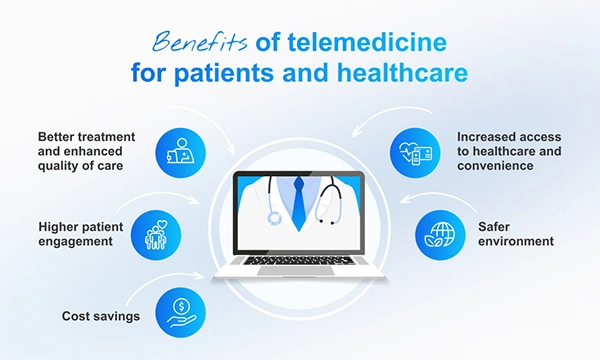The healthcare industry is always going through some shifting changes, that are often driven by technological advancements and evolving patient needs.
So, from revolutionizing drug discovery methods to harnessing the power of artificial intelligence for more personalized treatment, these revolutions are reshaping the way we deliver and experience healthcare.
In fact, the medical segment is getting so big that according to McKinsey, the health tech market is estimated to generate an annual value of $350-$410 billion by 2023.
So, in this read, we will dive deeper into some of the most significant medical trends that are not only revolutionizing the patient but also adding to an overall healthcare experience. Also, learn about Case Studies of Data Analytics in Healthcare by reading this article.
Let’s start!

Pharmaceutical manufacturing advancements refer to the improvements in the precision, accuracy, and personalization of health, wellness, and medicine products, such as drugs and supplements.
CBD (cannabidiol), a non-psychoactive compound that comes from the cannabis plant and is praised for its calming effects, is one such example. This is probably at the forefront of technological innovation in the healthcare segment, as it focuses on improving efficiency, reducing costs, and improving overall quality.
The more refined form, CBD isolate, results from more precise manufacturing methods that ensure a higher concentration and purity of a product that’s been around for a while.
Such methods ensure that the product is dosed accurately, stable under various conditions, and delivered inside the body in a more targeted way, ensuring better absorption and effectiveness.

Telemedicine refers to remote diagnosis and treatment through communication tech and software.
Though initially met with skepticism, telemedicine is becoming a healthcare trend, with increasingly more people preferring online consultations with specialists.
Video consultations, phone calls, live support (often done with chatbots), and apps help educate people, provide valuable insight, and point them in the right direction, be it to self-treat or consider an in-person visit with a healthcare professional.
This is particularly beneficial for the healthcare systems that are looking to enhance their access to care, especially for rural or underserved areas.
On top of that, telemedicine can improve patient outcomes through implementing timely access, which also reduces healthcare costs by eliminating the need for unnecessary travel and in-person consultation.

As arguably the most popular health and wellness tech today, AI is claimed to have numerous applications despite still being in its infancy, and is broadly considered playing an integral role in the future of healthcare.
AI’s ability to analyze and break down large volumes of data allows it to find connections and patterns that a regular person might miss.
One of the most promising applications of AI in healthcare is medical imaging analysis. AI-powered algorithms are perfect for analyzing medical images such as X-rays, CT scans, and MRIs that reduce the chances of human error and lead to a more efficient treatment.
These capabilities are slowly making their way into the field of diagnostics and treatment, helping healthcare professionals gain a deeper understanding of their patients. For example, here is a quote from a 2019 paper:
“Given the rapid advances in AI for imaging analysis, it seems likely that most radiology and pathology images will be examined at some point by a machine. Speech and text recognition are already employed for tasks like patient communication and capture of clinical notes, and their usage will increase.”
Five years later, these predictions are slowly becoming reality, particularly when interpreting medical imaging, such as X-rays, MRIs, and CT scans.

Health and wellness technology is rapidly gaining popularity among health and fitness-oriented people, driven by the demand for personalized health insights and real-time monitoring of various markers, such as heart rate variability.
Wellness tech, such as smartwatches, rings, and heart rate monitors, are equipped with advanced sensors that can monitor:
These data points can help users detect early illness, potential health issues, activity level, fitness health, and stress levels. Often, such devices come with built-in feedback mechanisms to inform users what potential steps to take.
Do You Know?
According to the Pew Research Center, about one in every three Americans will be wearing a smartwatch or fitness tracker by 2025.
As healthcare technology evolves, innovations like telemedicine, AI, and CBD technologies are transforming patient care and treatment. From diagnostics to wellness monitoring, these technologies enhance the precision and personalization of healthcare services.
These advancements improve accessibility, diagnostics, and personalization, paving the way for a more efficient healthcare system.
Keeping up with these trends ensures better health outcomes and a more connected future in medicine.

Thanks for choosing to leave a comment. Please keep in mind that all comments are moderated according to our comment Policy.